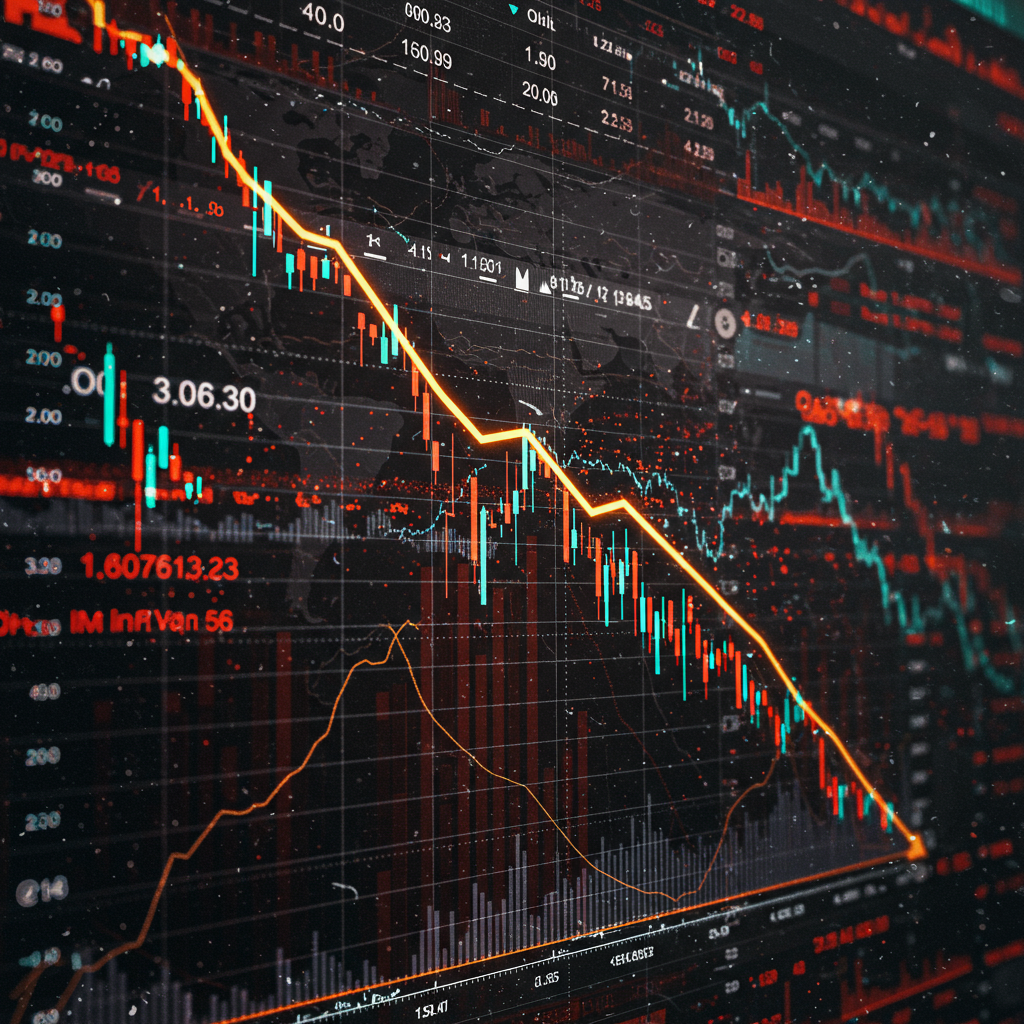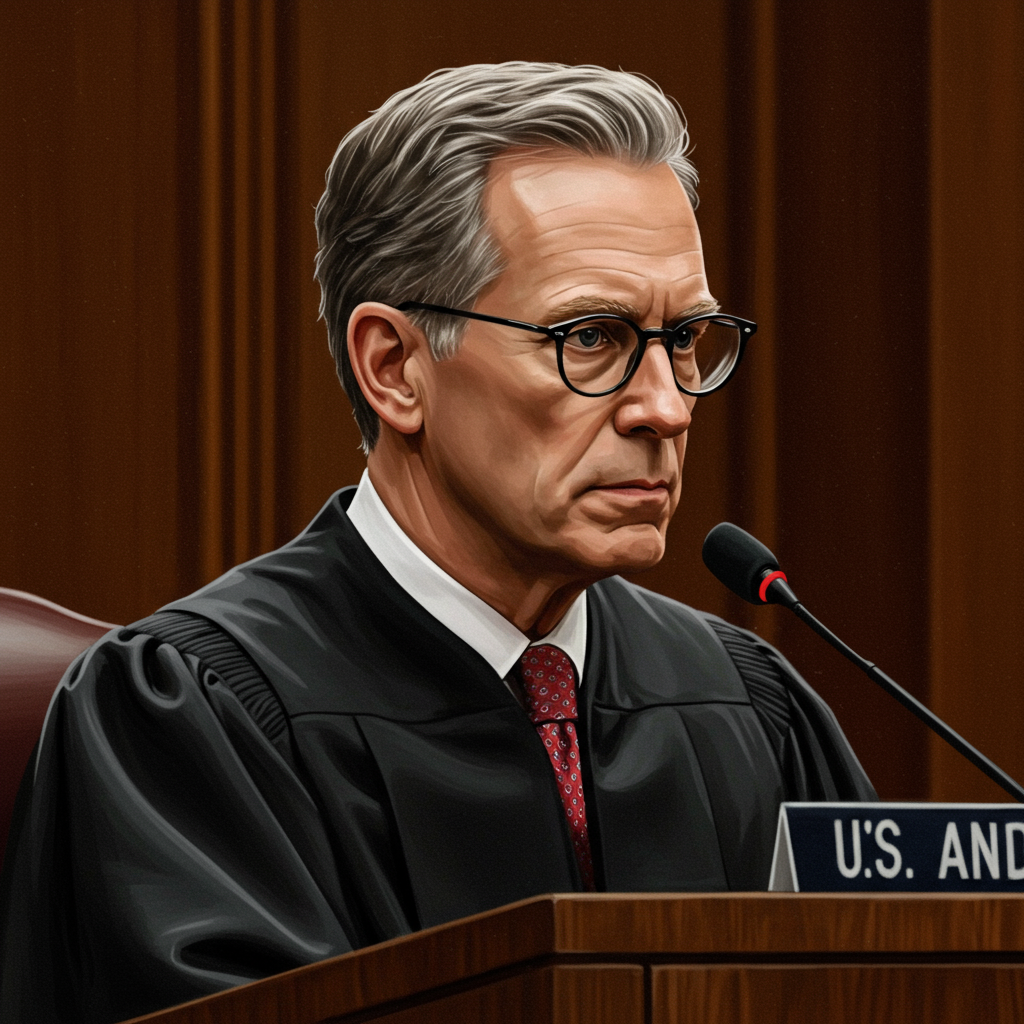The United States economy, now eight months into President Trump’s second term, finds itself navigating a landscape profoundly shaped by ongoing tariff policies and pervasive uncertainty. What does this mean for consumers, businesses, and the nation’s financial stability? With the administration consistently implementing new import taxes, generating over $30 billion monthly, economists and everyday Americans alike are grappling with unprecedented volatility and mixed signals that could redefine the financial future. This comprehensive guide will dissect the complex economic situation, exploring the impact of elevated tariffs, legal challenges, and other critical factors affecting the nation.
The Tariff “Magic Bullet” and Its Unclear Economic Impact
When President Trump took office, he championed tariffs—taxes added to a wide range of imports—as a “magic bullet” to ignite an economic boom. So far, these import taxes have indeed delivered a substantial revenue stream, funneling more than $30 billion into government coffers each month. However, despite this impressive influx, the long-term impact on the broader U.S. economy remains deeply ambiguous.
The scope of these tariffs is extensive, targeting “almost everything the United States imports,” including essential goods not produced domestically, such as bananas and coffee. The average tax rate on imported products has surged to nearly 18%, a dramatic increase from approximately 2.5% at the start of Trump’s second term. This marks the highest average tariff rate seen since the 1930s. Recent and threatened tariffs extend to softwood lumber, foreign-produced movies, name-brand pharmaceuticals, kitchen cabinets, and big trucks. While some threats haven’t materialized, many have been implemented, significantly expanding the list of import taxes.
Mixed Economic Signals and Growing Sectoral Strain
The broader economic impact of these policies presents a mixed picture. Initially, investors reacted with apprehension, leading to stock market dips that prompted the White House to scale back some tariff proposals. More recently, however, Wall Street appears to have “made its peace” with the tariffs, and the stock market is currently surging. Despite this, a deeper look reveals troubling signs beneath the surface.
Tariffs contribute to upward pressure on inflation, increasing costs for everyday goods. For example, lumber tariffs raise housing prices, and taxes on imported coffee mean higher prices for consumers. Some sectors are particularly hard hit: manufacturing, contrary to the policy’s stated intent, has been struggling. Reports from the Institute for Supply Management indicate tariffs are “playing havoc” with businesses. Farmers have also suffered significantly, with China ceasing to buy U.S. soybeans, leading to depressed grain prices. While the administration has considered using tariff revenue to aid farmers, many express a clear preference for stable markets and fair trade over foreign boycotts and government assistance.
Business on Edge: Navigating Extreme Volatility
A critical consequence of the tariff policy is the extreme unpredictability it creates for businesses nationwide. Companies face immense difficulty in long-term planning, as tariff rates can change rapidly, sometimes announced even via social media. Importers describe “flying blind,” placing orders without knowing what tariff rates will be upon delivery. Some have explored shifting operations to other countries, only to find those goods also subjected to high taxes. This volatile environment makes it exceptionally challenging for both domestic and international companies to establish a competitive posture and make sound investment decisions.
This level of uncertainty discourages new investment and prompts companies to delay hiring, further slowing economic activity. Analysts from EY highlight that fluctuating tariffs impose higher tax-related costs and continued uncertainty on businesses, leading many to avoid or delay significant capital expenditures. This translates directly to less hiring and slower consumer spending, anticipating a more pronounced slowdown in economic activity as the year progresses.
Legal Battles Over Presidential Tariff Authority
Adding another layer of complexity are the numerous legal challenges questioning the administration’s tariff authority. The White House justifies most recent tariffs under the 1970s International Emergency Economic Powers Act (IEEPA), asserting trade deficits constitute an emergency. However, critics argue this law does not grant the president the power to impose import taxes. Lower courts have consistently sided with critics, and the Supreme Court is now poised to hear arguments on this pivotal issue.
A ruling against the president could eliminate many existing tariffs and potentially necessitate refunds of the $30 billion collected monthly. While the White House warns of economic catastrophe, experts note the economy functioned well with significantly lower average tariff rates before the current administration. Such a ruling would curtail the president’s most potent “wild card” power in trade negotiations but would not eliminate all presidential tariff authority. Other avenues, like Section 232 of the Trade Expansion Act of 1962 (justifying tariffs based on “national security”), have seen their usage soar, contributing to a global trend of weaponizing national security claims in trade.
Beyond Tariffs: Broader Economic Headwinds
The current economic landscape is not solely defined by tariffs. Two other significant factors are contributing to the prevailing uncertainty:
Immigration Crackdown: The administration’s tightened immigration policies have led to a sharp drop in people entering the U.S. and an increase in those leaving. This could result in a net outflow of immigrants for the first time in over six decades. This trend has significant implications for the labor market, contributing to a slowdown in job additions, and for the broader economy, as immigrants contribute both labor and consumer spending.
Government Shutdown: A prolonged government shutdown further complicates the economic situation. While historical shutdowns have often had limited macroeconomic effects, the potential for mass layoffs of federal employees could change this. Crucially, the shutdown has delayed the release of vital economic data on the job market, inflation, and Gross Domestic Product (GDP). This leaves policymakers, such as the Federal Reserve, and businesses “flying blind” at a sensitive economic juncture where the job market is slowing and inflation is picking up, making informed decision-making exceptionally difficult.
Expert Consensus: Tariffs Not Delivering on Key Goals
A detailed assessment by numerous trade and economic experts paints a sobering picture of President Trump’s tariff policies. Their collective view suggests that, despite the stated objectives, tariffs are largely ineffective in achieving their aims and often incur significant, unintended costs.
Trade Deals: Despite aggressive tactics, the promised “big, beautiful deals” have largely not materialized. Negotiations have been characterized by extended deadlines and shifting demands, leading to an environment where trading partners are hesitant to commit amidst persistent “trade chaos.”
Financial Market Repercussions: U.S. financial market exceptionalism should not be taken for granted. Shifts in foreign asset holdings and hedging against currency risk can take quarters to unfold. Tariffs have also illuminated deep links between financial markets, economic trends, and central bank actions, influencing everything from interest rates to mortgage costs.
China’s Position: Many experts believe Beijing is “winning” the prolonged trade conflict. China has adopted a dual-track strategy of defensive diversification and offensive retaliation, using the tariffs to spur domestic innovation and accelerate its tech ambitions towards self-reliance.
U.S. Manufacturing Jobs: It’s too early to definitively say if tariffs will bring manufacturing jobs back to the U.S. New foreign direct investments take years, supply chains are complex, and labor shortages persist. Bolstering trade and global market participation, rather than tariffs, is seen as crucial for domestic manufacturing.
U.S. Trade Deficit: Economic theory and global data suggest tariffs have almost no effect on the trade deficit, which is driven by factors like savings rates and consumption. The deficit “unambiguously increased” by $175 billion in the first five months of the year due to businesses front-loading imports to beat tariff increases—a temporary effect that doesn’t indicate a sustained reduction.
Reducing Foreign Trade Barriers: Trump’s aggressive threats have shown “little success” in reducing foreign trade barriers. In fact, the U.S. is seen by some as having effectively “switched sides,” becoming one of the “worst of the unfair traders” by imposing the highest tariffs since the 1930s.
- National Security Costs: Tariffs are incurring mounting national security costs. They mean higher prices for the U.S. defense industry, reducing purchasing power. They damage relations with partners and allies, fostering “derisking” from the U.S. and calls for European “strategic autonomy” in critical sectors.
- www.npr.org
- www.npr.org
- abcnews.go.com
- www.aljazeera.com
- www.cfr.org
The Specter of Stagflation and the Federal Reserve’s Conundrum
The combination of slowing economic growth and rising inflation has analysts from Moody’s Analytics, EY, and Fitch Ratings warning of a potential “stagflation” scenario for the U.S. economy. This is characterized by economic slowdown alongside rising prices. U.S. stocks experienced a significant tumble recently, exacerbated by a weak jobs report showing the U.S. added only 73,000 jobs in July—significantly below the average earlier in the year—with substantial downward revisions for prior months.
This prospect presents a considerable challenge for the Federal Reserve. Current inflation stands at 2.7%, nearly a full percentage point above the Fed’s target rate of 2%, and forecasts suggest it will increase by at least an additional percentage point by next year. The Fed faces a profound “conundrum”: either risk further inflation by lowering interest rates to stimulate a slowing economy or precipitate a recession by raising them to combat tariff-induced price spikes. This delicate balancing act is made even harder by the lack of up-to-date economic data due to the government shutdown.
What This Means for You: Navigating Economic Uncertainty
For the average American, the current economic climate translates to tangible impacts on their daily lives and financial planning. The persistent threat of new tariffs, alongside the existing ones, means higher consumer prices for a vast array of goods, from coffee to cars. Businesses, facing unpredictable costs, may delay expansions or hiring, influencing job market stability. Investment decisions become more complex as market volatility persists. Moreover, the Federal Reserve’s difficult position means interest rate fluctuations could affect everything from mortgage rates to savings yields. Understanding these dynamics is crucial for making informed financial choices in an economy defined by ongoing uncertainty.
Frequently Asked Questions
What are the key economic impacts of Trump’s tariffs on U.S. consumers and businesses?
Trump’s tariffs, averaging nearly 18% on a vast array of imports, generate significant revenue but primarily lead to higher consumer prices for everything from housing (due to lumber tariffs) to coffee. Businesses, particularly in manufacturing and agriculture, face increased costs, supply chain disruptions, and extreme unpredictability, often resulting in delayed investments and hiring freezes. Ultimately, the cost of these import taxes is largely passed on to American consumers, diminishing purchasing power.
How is the Federal Reserve responding to the economic challenges posed by tariffs and uncertainty?
The Federal Reserve faces a significant “conundrum” amidst the economic uncertainty. With a slowing job market, rising inflation (currently 2.7% and projected to increase), and delayed vital economic data due to a government shutdown, the Fed struggles to make informed decisions. Raising interest rates to combat inflation risks further slowing the economy into a recession, while lowering them to stimulate growth could exacerbate price spikes. This leaves policymakers “flying blind” at a critical juncture.
Are Trump’s tariffs achieving their stated goals, such as boosting U.S. manufacturing or reducing the trade deficit?
According to numerous economic experts, Trump’s tariffs are largely failing to achieve their stated goals. Instead of bringing manufacturing jobs back, the policies often create higher costs for domestic production and exacerbate labor shortages. The trade deficit has actually “unambiguously increased” temporarily due to businesses front-loading imports to beat tariff deadlines. Experts generally agree that tariffs are ineffective in reducing trade deficits, which are influenced more by factors like national savings and consumption.


